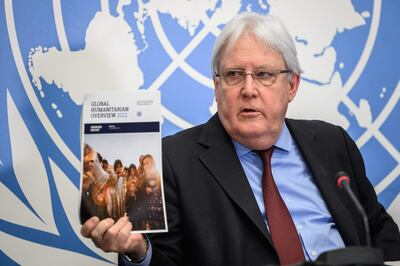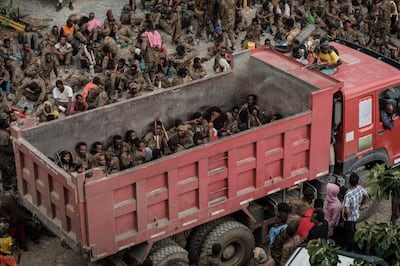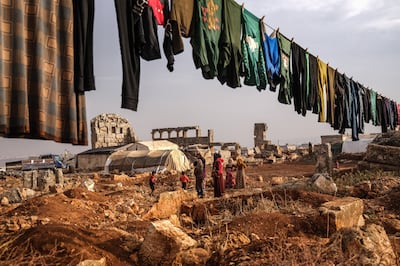There are 274 million people worldwide who will need emergency aid and protection in 2022, a 17 per cent increase compared with last year, which was already the highest figure in decades, UN humanitarians said on Thursday.
The amount is equivalent to “the world’s fourth most populous country”, Martin Griffiths, UN Humanitarian Affairs chief said at the launch of the 2022 Global Humanitarian Overview (GHO) in Geneva.
The GHO is the world’s most comprehensive and evidence-based assessment of humanitarian need issued annually by the UN’s humanitarian bodies.

An estimated $41 billion is required in urgent relief funds for 183 million people in 63 countries that are most in need, according to the report.
Two regions, the Middle East and North Africa and West and Central Africa, have the most pressing humanitarian need because of protracted crises that show no signs of abating.
Famine is a terrifying prospect for 45 million people in 43 countries. More than 1 per cent of the world’s population are displaced, about 42 per cent of whom are children.
Millions of internally displaced people are living in protracted situations, 40 per cent of whom are unable to return home. Women and girls suffer the most in crisis areas as risks increase.
“Children, especially girls, are missing out on their education. Women’s rights are threatened,” Mr Griffiths said.

Extreme poverty is rising and food insecurity is at unprecedented levels. Globally, up to 811 million people are undernourished.
“Without sustained and immediate action, 2022 could be catastrophic,” the UN said in its appeal.
The Covid-19 pandemic is also taking a heavy toll in developing countries, claiming at least 1.8 million lives across the GHO countries, fuelled by variants and a lack of vaccines.
Worst hit
Afghanistan, Syria, Yemen, Ethiopia and Sudan were the five countries worst affected with the highest aid needs.
Afghanistan needs $4.5 billion in relief funds in 2022. Syria comes next with $4.2 billion, Yemen with $3.9 billion, Ethiopia with $2.8 billion and Sudan with $1.9 billion.
In Afghanistan more than 24 million people require life-saving assistance to prevent catastrophe.
“Needs are skyrocketing. I saw systems on the brink of complete collapse and the rights of women and girls under threat,” Mr Griffiths said of the war-ravaged country.

He also pointed out that aid agencies “never left Afghanistan, in the wake of August’s Taliban takeover. We have a programme for 2022, three times the size of the programme for 2021 because of the needs”.
In Ethiopia, climate shocks, high levels of conflict, insecurity and disease outbreaks coupled with a deteriorating economy continue to exacerbate humanitarian needs for 25.9 million people.
“New battlefields have emerged, including in northern Ethiopia, where millions now need aid to survive. Across Ethiopia, humanitarian needs are growing at an alarming rate,” Mr Griffiths said.
Besides the conflict, drought and locust swarms are pushing more people to the brink.
Health care was delivered to 10 million people in Yemen and hundreds of millions of dollars were dispersed in cash assistance, “so kept famine at bay”, Mr Griffiths said.
Acute food insecurity is a reality for 16.2 million people in the country. Even with the current levels of humanitarian assistance, 40 per cent of the population have inadequate food.

A decade into the crisis in Syria, basic service delivery is vastly inadequate and hampered by damaged infrastructure, lack of critical supplies and, increasingly, financial unaffordability.
In South Sudan, more than half a million people were brought back from the brink of famine.
The country, according to the UN, is facing its highest levels of food insecurity and malnutrition since it declared independence 10 years ago.
Climate crisis
Climate crisis is no longer a future threat, the relief agencies said, and is fuelling famine and conflicts around the world.
The past six years were the hottest on record, causing heatwaves, droughts, tropical storms and severe floods.
India floods: helicopter pulls people to safety in dramatic rescue

Records show 26 per cent more storms, 23 per cent more floods and 18 per cent more deaths from floods compared with the average.
“The climate crisis is hitting the world’s most vulnerable people first and worst. Protracted conflicts grind on, and instability has worsened in several parts of the world, notably Ethiopia, Myanmar and Afghanistan,” Mr Griffiths said.
"The cost of inaction in the face of these challenges is high," he said.





